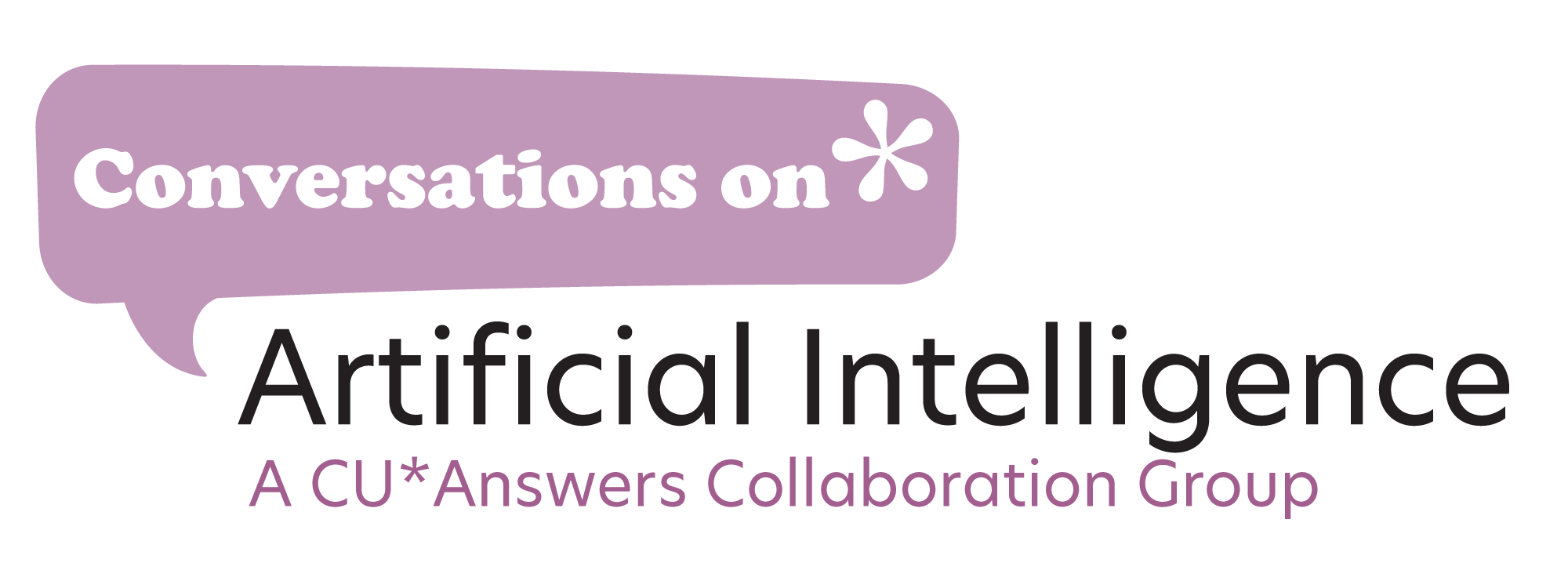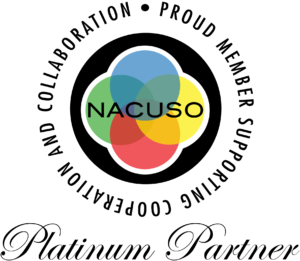
We need your input! Learn more about what we’re doing and lend your voice to our efforts by joining the Conversations on Artificial Intelligence group!
Excerpts from the CU*Answers 2024 Business Plan and 2024 Strategic Technology Plan
Objective: Leverage existing and emerging technologies in the AI space to decrease time to bring products to market. Artificial intelligence is a machine’s ability to perform the cognitive and development functions we typically associate with human work product.
There are many ways CU*Answers could make use of Artificial Intelligence tools. There are many available to buy as a service, but there are also toolsets that can be used to build our own services. CU*Answers cycles through a large amount of data that could be used to train these tools to provide enhanced services and experiences as well as to gain process efficiencies.
Using AI is not without challenges. Like humans, AI tools are only as smart as their training. Without a full understanding of context and complete understanding of the feature domain, a product may be produced that is free from errors but lacking in key functionality and completeness. Providing sufficient training data is critical to building tools that produce good results. Training an AI on poor or incorrect data can produce bad results. Code generated by an AI still requires testing, debugging, and ongoing maintenance. Today, AI is not truly intelligence in that it can only make guesses based on what it knows. AI as a tool will continue to require skilled guidance and interpretation to provide good results.
One of the largest challenges with using AI is how it is ethically adopted. Due diligence is required to ensure that training models have been ethically obtained and use factors that are not burdened by intellectual property or data privacy considerations. Users will require training to not only know how to use the tools, but when to use them to gain the benefits while maintaining continuity with business rules and best practices.
- Context and Domain Expertise
- Training Data
- Ongoing support and maintenance
- Innovation
- Due diligence
- Intellectual Property Concerns
AI for Code Development
There are many efficiency and productivity advantages to be had by using AI for software development. Good tools used properly can automate repetitive tasks and reduce errors and rework by identifying and reusing good design patterns and code and making them standards for new features. Time to delivery can be decreased via rapid prototyping. AI can also be used to help facilitate knowledge transfer and training for our human developers.
- Task and process automation
- Design and code pattern re-use
- Code refactoring and optimization
- Error detection and testing
- Rapid prototyping
- Team collaboration
To take advantage of AI tools for software development, we should evaluate tools in the following areas:
- Code Review
- Code Refactoring
- Code Generation
- Rapid Prototyping
AI for Member-facing Applications
There are two primary applications for member-centric uses of AI. The first area is member support. CU*Answers has extensive documentation that could be used to train AI models to provide enhanced help systems with search and chat-based integrations. CU*Answers has already been working on chat and phone integrations with companies like Interface. AI that allow a credit union to train a chat system to perform common support tasks like balance inquiries and transfers. These types of integrations require core integration as well as application specific training. CU*Answers should be looking to integrate with a common support platform that could be continuously trained with documentation and data within CU*BASE and AnswerBook knowledge databases.
The second area of application for member-facing applications would be to create engagement and service opportunities for members. Several custom integration opportunities have been reviewed around providing loans offerings determined by AI models. These models use member demographics, history, and transactional data to qualify. CU*Answers could take advantage of 3rd parties developing these types of applications but should also strive to implement its own tool set.
AI for Client-facing Applications
CU*Answers CSR and Help Desk staff have developed many tools, processes, and knowledge bases for supporting credit unions. Everything from the online store to AnswerBook could be used to train AI tools to provide direct query and response as well as staff-directed guidance to get the right engagement between the credit union and CU*Answers. The vast amount of data processed by CU*Answers could also be leveraged to provide member and operational insights for the credit union. Increased optics covering additional services will be helpful to providing ongoing service management for the credit union.
Data Driven Applications
In addition to member data points utilized for lending models, there are many other data sets that could be used to train AI models. Optics tracked by online banking, mobile apps, and CU*BASE could be used to detect member utilization patterns and make recommendations for additional products, services, and engagement opportunities. The biggest challenge to CU*Answers will be determining the best ways to map AI models to the diverse products and services each credit union can choose to offer. We have some existing tools like CLR Path and FUEL decision models that could provide some ideas that could be further developed to take advantage of newer AI tools.
Security and Capacity Planning
CU*Answers processes a massive number of requests for services. Along with that comes a lot of logging and event tracking. Various tools have been developed to provide visibility into this data, but AI gives us several opportunities. By using AI based analysis tools, we could potentially be able to classify cyber-attacks and provide faster, more deliberate, and more effective responses. Being able to characterize and quantify an attack, we can also better review the incident to detect any breaches or data leakage. The same logging data can also be used to identify large scale utilization and peak/lag times to help plan for capacity growth and resource allocation.
AI for Network Support
AI is changing the way knowledge workers work, and CU*Answers Network Services (CNS) will run multiple pilot projects in 2025 to evaluate how best to bring these tools into our standard workflows:
- As a personal guide and tutor for solving complex problems: Use of public information for non-proprietary problem solving. Can an AI mine internal knowledgebases? What privacy restrictions will be needed? Our 2025 plan: Existing tools such as ChatGPT and Bard are available now on the public side. Research vendors for an internal tool and run a pilot.
- As a client service tool: Guide clients through a smart self-help tool. Could it remove calls from the support queue? What privacy restrictions will be needed? Our 2025 plan: Research vendors for a client tool and run a pilot.
- As an autonomous break/fix solution: Can an AI detect when network components break and perform automated troubleshooting and/or repair? Our 2025 plan: Research vendors and have a recommendation.
NEW! Check out the slides from the 2024 Leadership Conference
Join our Mailing List
Chefs for this recipe: Brian Maurer, EVP Software Development, and Dave Wordhouse, EVP Technology
















